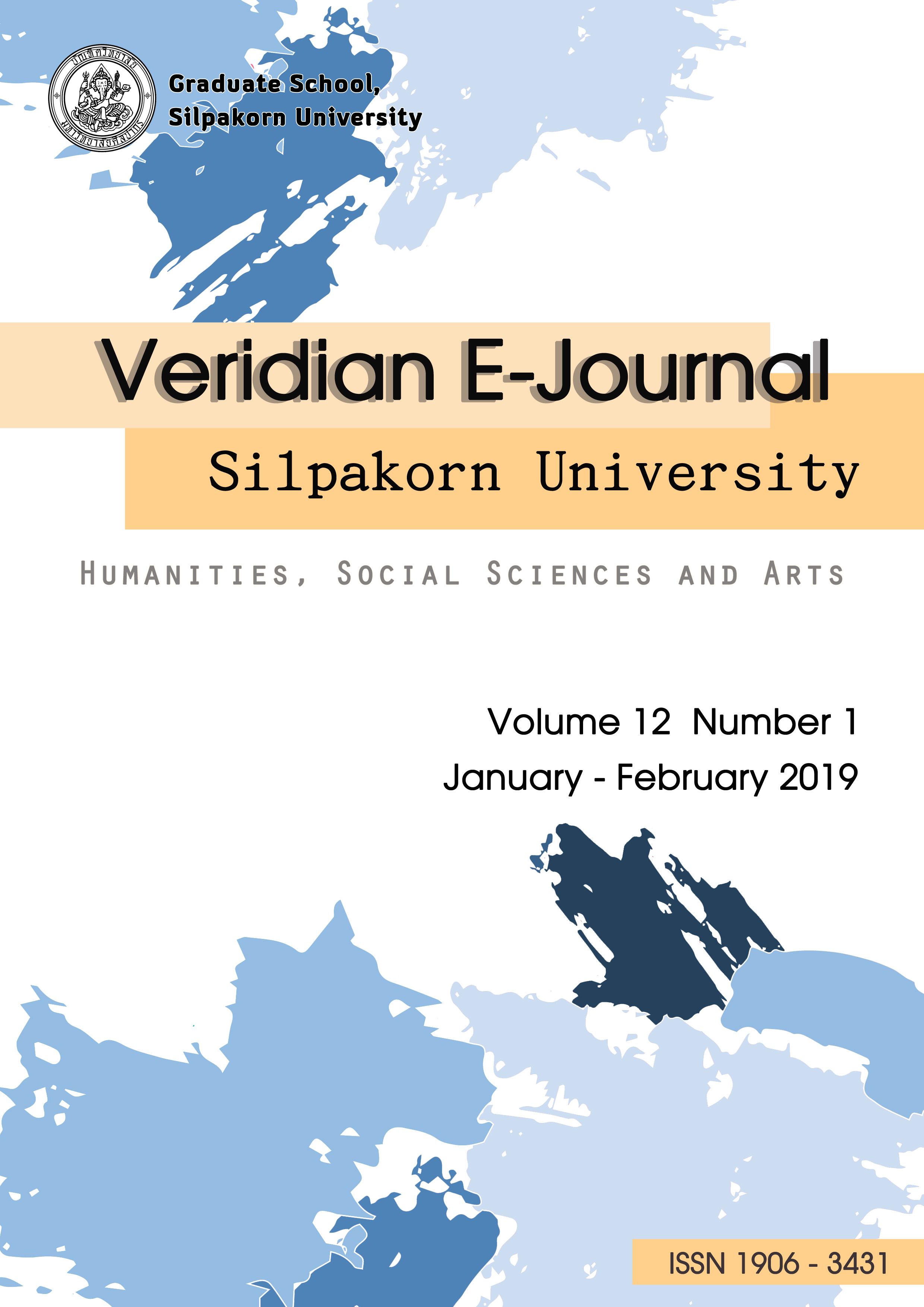The Development of Teaching English Minimal Pairs through Productivity-Based Instruction
Main Article Content
Abstract
Abstract
The aim of this study is to develop teaching English minimal pairs through Productivity-based Instruction in order to propose a teaching technique for the 21st century learning. The study was designed by using concurrent triangulation strategy which both QUAN and QUAL were conducted simultaneously. The research instruments consisted of satisfaction questionnaire, critical incident record and focus group interview. This study showed that using Productivity-based Instruction can enhancing students group collaboration, and better understanding through the content given. Moreover, it helps students learn enthusiastically and actively because they put more attempt on their product of learning.
การศึกษาครั้งนี้มีวัตถุประสงค์เพื่อพัฒนาการสอนคู่เทียบเสียงภาษาอังกฤษโดยใช้การสอนเชิงผลิตภาพเพื่อนำเสนอเทคนิคการสอนสำหรับการเรียนรู้ในศตวรรษที่ 21 การศึกษานี้ออกแบบด้วยการใช้การวิจัยเชิงปริมาณและคุณภาพพร้อมตรวจสอบด้วยเทคนิคสามเส้า เครื่องมือที่ใช้ในการวิจัย ได้แก่ แบบสอบถามความพึงพอใจ แบบบันทึกเหตุการณ์สำคัญ และการอภิปรายกลุ่ม ผลการศึกษาแสดงให้เห็นว่าสอนเชิงผลิตภาพ สามารถเพิ่มการทำงานเป็นกลุ่มของนักศึกษาได้ และทำให้เข้าใจเนื้อหาได้ดีขึ้น ตลอดจนยังช่วยนักศึกษาเกิดการเรียนรู้ที่สนุกสนานและกระตือรือร้นเนื่องจากนักศึกษาพยายามสร้างผลผลิตจากการเรียนรู้ด้วยตนเอง
Article Details
References
Aydoğan, H. & Akbarov, A. A. (2014). “The four basic language skills, whole language & intergrated skill approach in mainstream university classrooms in Turkey”. Mediterranean Journal of Social Sciences, 5(9), 672-680.
Krashen, S.D. (1981). Second Language Acquisition and Second Language Learning. Oxford:
Pergamon Press.
Iamsirirak, E. (2017). “Teaching vocabulary in English literature for Thai L2 students through productivity-based instruction”. Veridian E-Journal International Humanities, Social Sciences and Arts Silpakorn University, 10, 5: 144-158.
Laslie, L. & Caldwell, J. S. (2010). Qualitative reading inventory-5. USA: Pearson
Mihaly Csikszentmihályi. (1990). Flow: The Psychology of Optimal Experience. Harper & Row.
P21 Partnership for 21st Century Learning. (2007). Framework for 21 Century Learning. Retrieved from https://www.p21.org/storage/documents/docs/P21_framework_0816.pdf.
Preedeekul, A. (2017). “A comparison of English Learning Achievement and English listening-speaking skills of higher education students with Teach Less Learn More (TLLM) instructional model and conventional approach”. Veridian E-Journal International Humanities, Social Sciences and Arts Silpakorn University, 10, 5: 233-253.
SERC Pedagogic Service Project. (2011). Gallery Walk. Retrieved from -https://serc.carleton.edu/introgeo/gallerywalk/index.html.
Sinlarat, P. (2016). Thai Education 4.0: Creative and Productive Educational Philosophy.
3rd ed. Bangkok, Thailand: Chulalongkorn University Printing House. (in Thai)
Sithsungnoen, C. (2018). Veridian E-Journal International Humanities, Social Sciences and Arts Silpakorn University, 11, 4: 19-31.
Suthadarat, S. (2014A). Additional Reading Book for Teaching Behavior in English 1. 2nd ed. Bangkok, Thailand: Ramkhamhaeng University. (in Thai)
Suthadarat, S. (2014B). Linguistics for Teachers. 2nd ed. Bangkok, Thailand: Ramkhamhaeng University. (in Thai)

